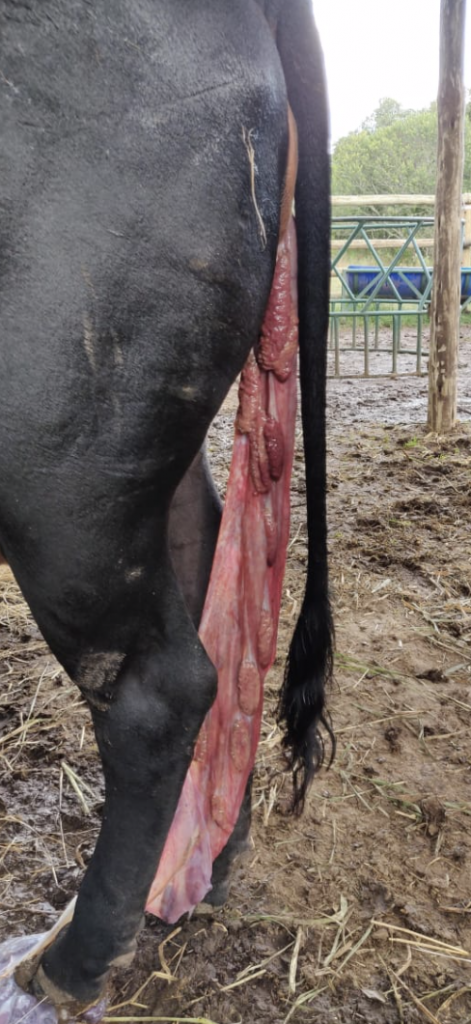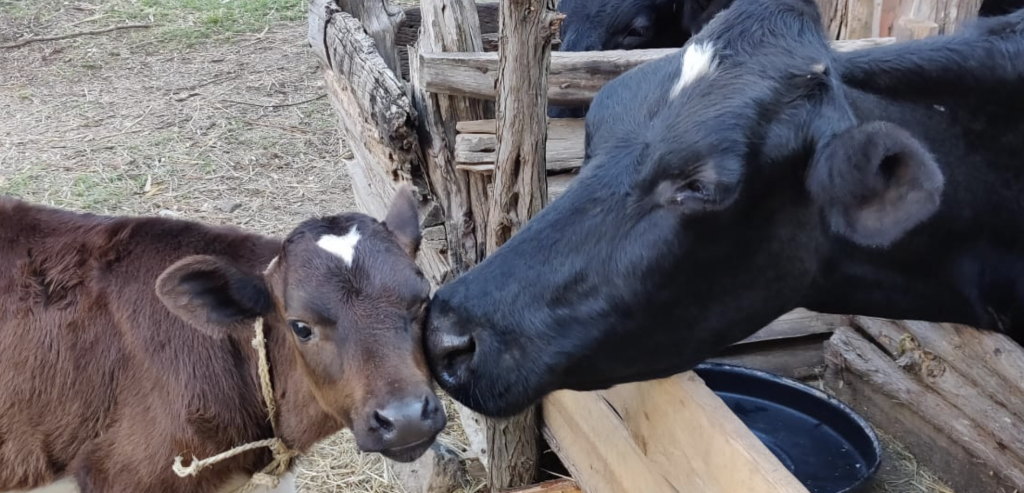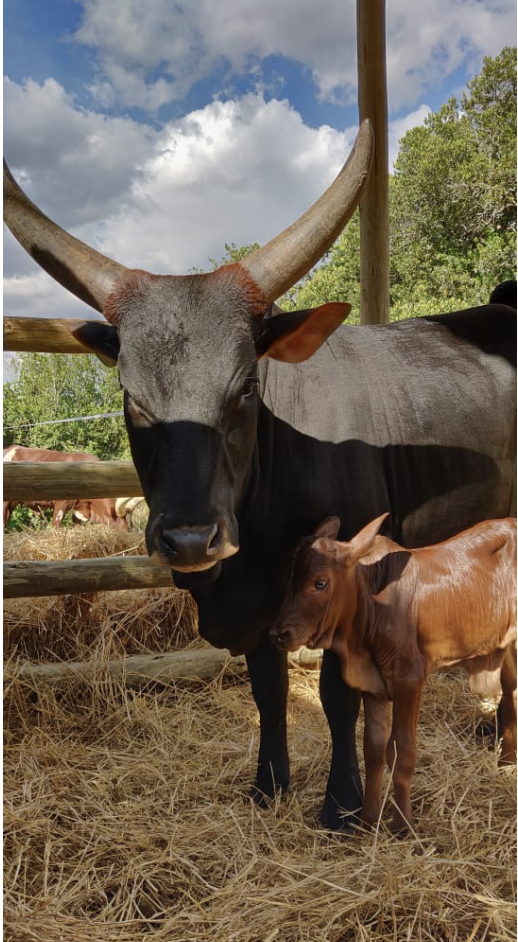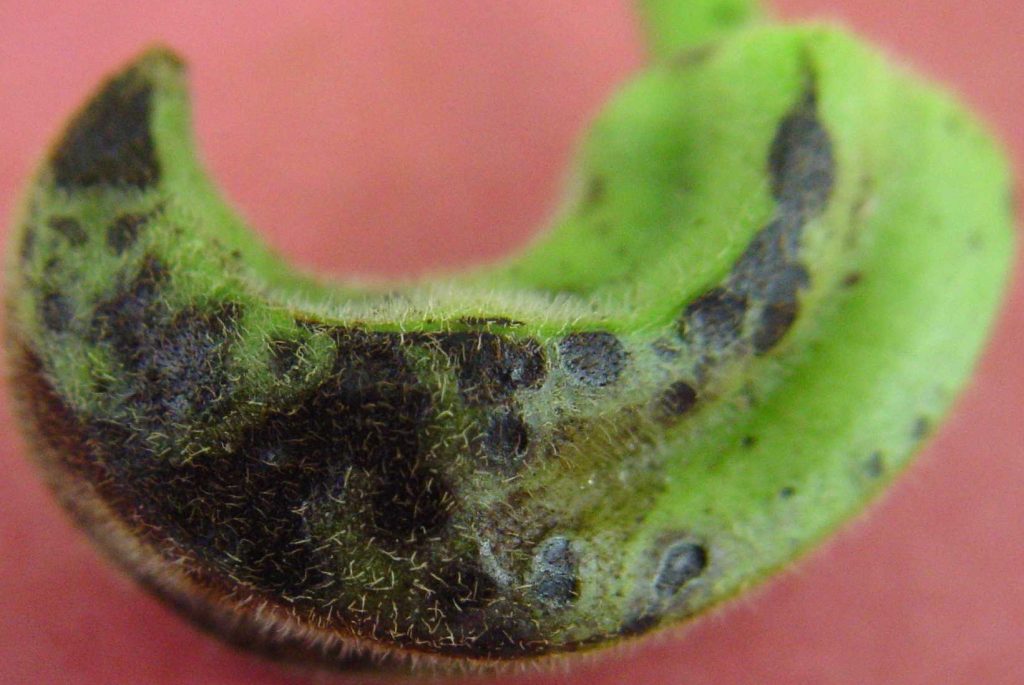Credits: Biovision-Infonet
A successful livestock owner knows that it really pays to take very good care of the young stock. The bull calves can be sold and the heifer calves are the future cows and production animals. Any losses means future income will be reduced. Newly born calves must be fed colostrum within few hours after birth to boost their immunity. Colostrum (the first milk the dam produces after calving) is a very concentrated food and disease prevention medicine for young calves and they must have as much as possible. It is recommended that they are fed with this within 2 hours of being born. Without colostrum a calf will be malnourished, grow poorly and prone to diseases throughout its life. Mostly such calves do not survive long. After the first 24 hours the stomach of the calf closes for the antibodies contained in the colostrum and only takes up the nutrients. The colostrum gradually becomes thinner and more like normal milk until after about a week it can be mixed with other milk.It is important to keep a good hygiene, and small calves are sensitive and can easily become diseased:
- Where buckets are used for feeding, clean them thoroughly before feeding calves to avoid infections.
- Milk should be fed at body temperature (37oC) i.e. immediately after milking.
- At 2-3 weeks of age a calf should be fed 5 Lts of milk /day.
- At 4-7 weeks feed 6 Lts/day (late weaning) or 4 Lts/day plus o.25-0.75 Kg/day of early weaning pellets (early weaning)
- If a farmer has to feed milk replacers then it is absolutely necessary to follow manufacturers’ instructions for reconstitution. There is organic milk replacer on the market, but it is expensive.
- Calves should be provided with good quality hay and fresh forage by the 3rd week to enable the calf to start developing its rumen. Calves should be left to graze where good pastures are available. The calves should have access to unlimited supply of water and minerals. Calves should be sheltered in a clean and dry environment
Calf weaning
Weaning is done to enable the dam to return on heat and is recommended at between 3-4 months of age or depending on the weather conditions. Calves should be weaned when there is adequate pasture and is done by separating calves from the dams. One method to reduce stress at weaning is to separate the cows and calves in a way that allows them to still see, smell and touch each other.
- Calves are weaned at 12 weeks of age for early weaning or at 16 weeks for late weaning
- To wean, you provide adequate amount of solid feed e.g. concentrates, hay and green forages. To be weaned the calf should have increased its girth (LWt= Liveweight) by 2 1/2 times the birth weight e.g. if a calf was born at 35 kg LWt. then it should be weaned at about 90kg LWt
- Weaning method is by reducing liquid diet gradually over a period of 10 days. Towards the end of the weaning period the calf may be given only one liquid meal per day
- For beef breeds calves are left with their dams as long as practically possible. This gives the highest growth rate. In organic farming calves are weaned as late as possible (10-11 months).
Other Calf Management Practices
Disbudding
Disbudding is not recommended in organic farming unless the breed is very aggressive and prone to fighting. If it is necessary, disbudding is done 2 to 3 months of age or as soon as the horn tip can be clearly felt. Use proper equipment. A local anesthetic such as Lidocaine must be used to prevent suffering. Use disbudding iron or caustic stick. To disbud, we heat the iron until red hot. Clip off the hair around horn area. Place the heated iron end over the bud at intervals of 5 to 10 seconds, each time firmly but not hard pressure. We stop heating when the colour of the bottom of the bud turns deep cooper and finally apply disinfectant. Do not use acid pastes.
Removal of extra teats
Extra teats are particularly in the way in case of machine milking. When hand milking, it can be annoying if the milk starts leaching from the extra teats every time you milk. Some practice to cut the extra teats off at an age of 2 to 3 weeks of age. This can be done by cutting the extra teat carefully with a sharp pair of scissors and disinfect the wound with iodine.
Castration
Castration is done to reduce inbreeding and to achieve well-distributed fat in beef animals. It is the easiest to do it during the first week by applying castration rubber bands to males not meant for breeding; it is not painless, but a method recommended in organic production systems.
Calf marking
All calves should be marked after birth particularly when they are many. This is very necessary for identification and record keeping. Ear tagging, tatooing and branding can be used.
De-worming
De-worming in calves must be done if there are signs of parasite attack. In organic herds, it is not permitted to use medicine for prevention of diseases but parasite infections should be prevented through good management practices, such as clean grazing areas and making sure that the young calves are also fed other feed and can have access to milk as long as possible, so that they do not rely heavily on grazing, and by not mixing calves of different age groups in the same flock. Treatment should depend on worm counts, as recommended by the local veterinarian, and the general state of health of the animal.
Disease control
Dipping or spraying using recommended acaricides does control of ticks and external parasites. This is done to avoid transmission of diseases to the animals. Spraying and dipping should be done weekly or biweekly depending on the tick/insect pressure. In many cases, endemic stability can be kept by removing ticks by hand. Sometimes it is beneficial in high tick infestation areas to let the animals have a few ticks in order to develop resistance to many of the tick borne diseases. Please consult your veterinarian.
Common calf management challenges
- Calf scours Causes: Poor nutrition and feeding e.g. dirty milk, dirty buckets, overfeeding etc. Signs: Calf scours (whitish diarrhoea), soiled tail, loss of appetite, high temperatures and dehydration.Control: Reduce or completely withdraw milk for two to three meals. If the above does not work withdraw milk 2-3 meals and then replace it with warm water mixed with 1/2 tablespoon of baking powder plus two tablespoons of common salt and 110 g of glucose (mixed in 4.5 litres warm water). If disease is persistent consult veterinarian. If no veterinarian is available there may be sulphamidine tablets available from the nearest chemist designed for scouring calves. Use only as directed.
- Calf Pneumonia Causes: The disease occurs if the calf is exposed to sudden chilly conditions (draughty quarters) or poor ventilation.Signs: Watery discharge from nose and eyes, shallow and rapid breathing, coughing, loss of appetite and high temperatures. Control: House all calves at least for the first 6 weeks; Avoid draughts; Treatment with suitable drugs. If disease is persistent consult veterinarian.






